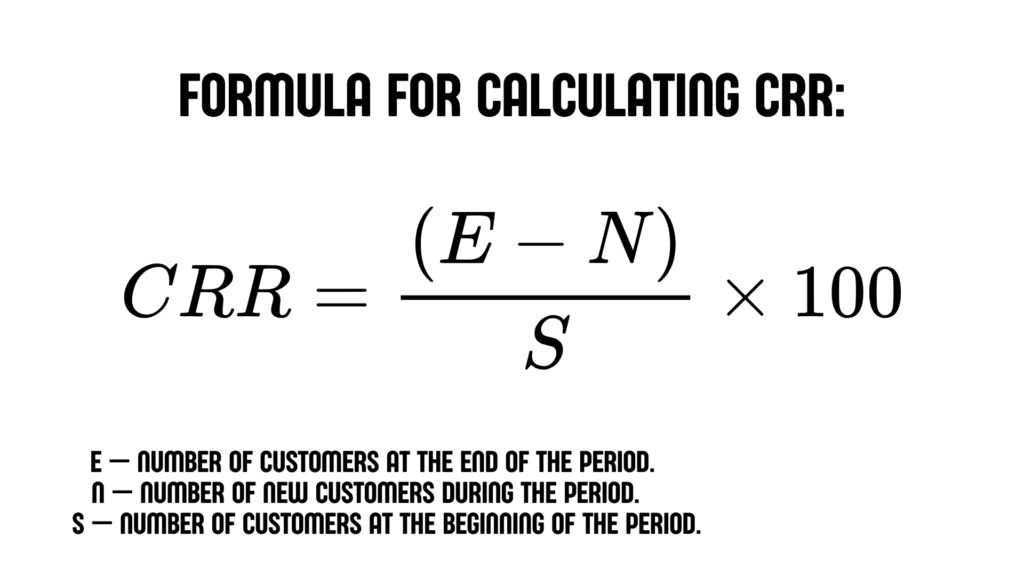Retention Rate is one of the key indicators in marketing, which reflects how many users continue to use the product after a certain time after the first interaction. The higher this indicator, the better the customer retention strategy works.
In this article, we will analyze how retention is calculated, which key indicators are important to track, and what methods will help to increase it.
Key Retention Marketing Indicators and Their Calculation
1. Customer Retention Rate (CRR)
CRR is the percentage of customers who stay with your company after a certain period of time. This metric shows the effectiveness of your retention strategies.

| CRR indicator | Interpretation |
| < 50% | Low retention, needs changes |
| 50-75% | Average level, room for growth |
| > 75% | Good indicator, stable business |
For example: If you had 100 clients at the beginning of the quarter, 40 new clients were added in three months, and at the end there were 80 left, your CRR would be:
CRR=(80 – 40)/100 x 100 = 40% – low retention
2. Customer Lifetime Value (KLV)
CLV (customer lifetime value) shows how much profit a customer brings to a company over the entire period of interaction.

For example: If the average check is $1,000, the client buys goods 3 times a year, and the average duration of cooperation is 2 years, then the CLV will be:
CLV=(1,000×3)×2=6,000$
3. Repeat Purchase Rate (RPR)
RPR shows how often customers return for repeat purchases. A high RPR indicates a good level of customer loyalty.

| RPR indicator | Interpretation |
| < 20% | Low level, requires analysis |
| 20-40% | Average level, room for improvement |
| > 40% | High level of customer loyalty |
For example: If out of 500 customers 50 made repeat purchases in a quarter, then the RPR will be:
RPR=(50/500)×100=10% – low level
What are the types of retention?
There are several types of user retention:
- Cohort retention – shows how long users from a specific group (cohort) remain active.
- Product retention – reflects the frequency of users returning to a specific product.
- Marketing retention – analyzes the effectiveness of advertising campaigns in terms of attracting and retaining an audience.
Factors affecting Retention Rate

Product quality – the more convenient and useful the product, the higher the likelihood that users will stay.
- Feedback and support – quick response to questions and problems increases customer loyalty.
- Personalization – tailoring offers to each user increases the likelihood of repeat interaction.
- Loyalty programs – bonuses and discounts motivate customers to stay with the brand longer.
- Analytics and data management – understanding user behavior helps to eliminate problematic issues in a timely manner.
How to increase Retention Rate?

- Effective onboarding – clear instructions and training materials help users get used to the app faster.
- Personalized marketing – relevant offers and recommendations make interaction more convenient.
- Intuitive interface – user-friendly UX/UI reduces the likelihood of user churn.
- Loyalty programs and referral bonuses – encourage users to stay longer.
- Continuous testing and analytics – helps find weak points and improve retention strategy.
Retention marketing is a powerful tool that allows you not only to attract new users, but also to retain existing ones. Using metrics, analyzing the user path and constantly improving the product, you can significantly increase the Retention Rate and make your business more profitable.
Monitor your metrics, test new strategies and build long-term relationships with your customers!
Leave a Reply